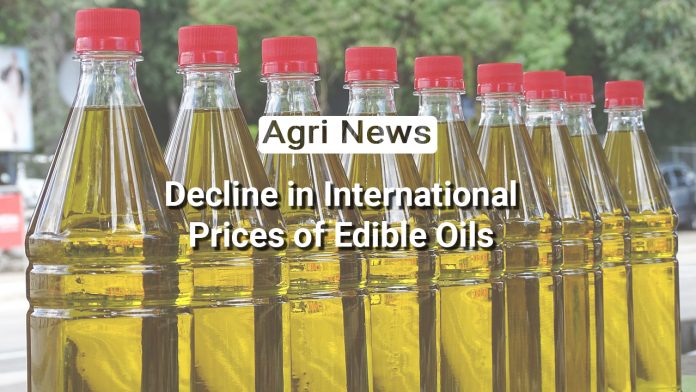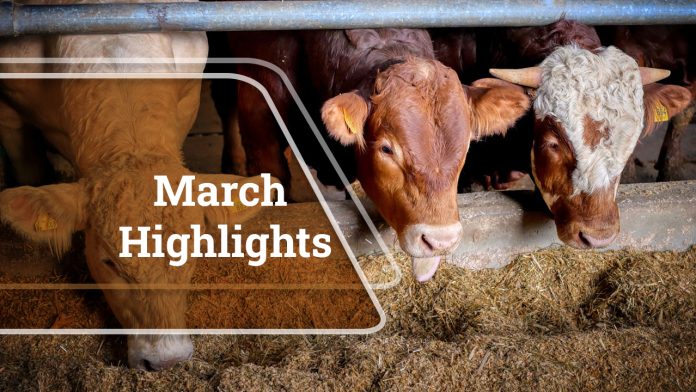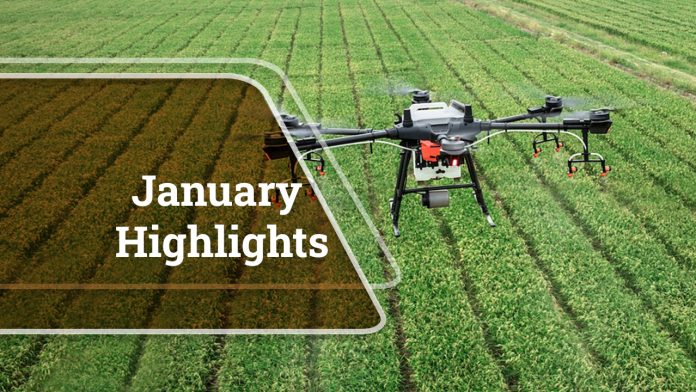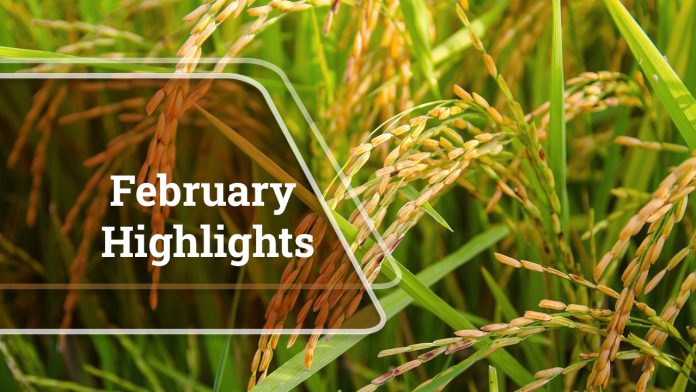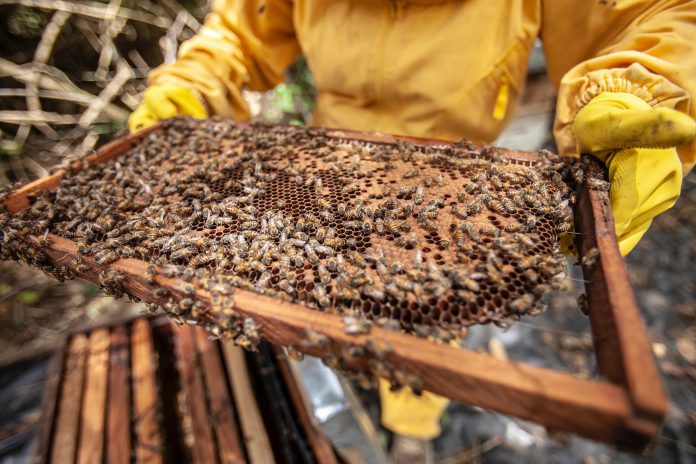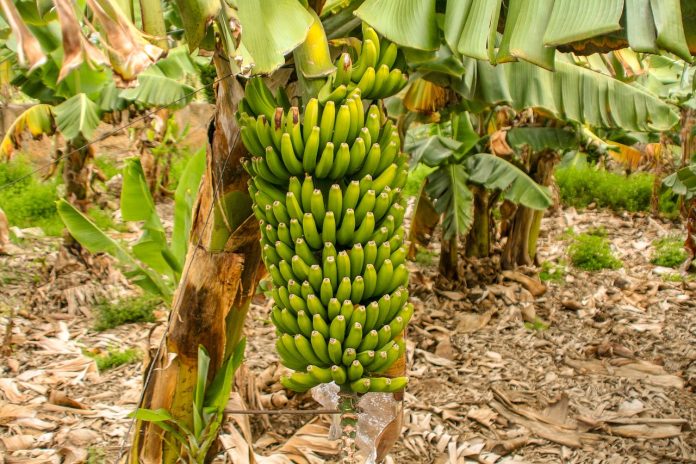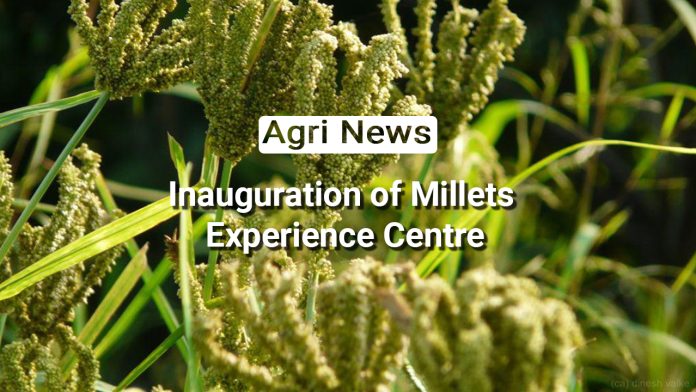Banana (Musa paradisica L.) belongs to the family Musaceae originated from South-East-Asia and it is the oldest fruit in India. Second most consumable fruit after mango in India. Banana farming is done in various states in India. South India (Kerala, Tamil Nadu, Karnatak), Western India- (Gujrat, Maharashtra), Eastern India (Assam, Bihar). The complete Banana POP has been discussed in this article.
It is the most important factor to follow the package of practices of banana to grow a healthy banana crop. Banana is a good source of Potassium, Phosphorus, calcium & magnesium, which is also a rich source of carbohydrate and is rich in vitamin B. It helps in reducing risk of heart diseases, gastroenteritis, arthritis, ulcer, and kidney disorders. The processed products of bananas are chips, banana puree, jam, jelly, etc.
Banana Crop at a Glance
- Biological name: Musa sp. (Musa paradisica L.)
- Popularly known as: apple of paradise, Adam fig, Bale (Kannada)
- Crop season: Rabi and Kharif
- Crop type: Horticultural crop
- Banana Production (2021): 30.50 tonnes/ ha
- Estimated banana production: 14.20 mt/ha
- Quantity exported in 2021:3.78 t
- Soil requirement: Alluvial and volcanic soil, black loam, coastal sandy loams and the red lateritic soil
Climate Requirements
When to grow Banana crop
Banana is basically a tropical crop, grows well in temperature range of 13ºC – 38ºC with RH regime of 75-85%. In India this crop is being cultivated in climates ranging from humid tropical to dry mild subtropics through selection of appropriate varieties like Grandnaine. The average rainfall requirement is 650-750 mm for banana cultivation.
Land & Sowing Preparations for Banana
How to grow Banana crop
Banana roots are delicate and tender, so banana farms should be well pulverized. Bring the soil to a fine tilth by deep ploughing and harrowing. Pits are dug in the size of 60x 60 X 45 cm, fill the pits with 0.5-1 kg of neem cake and well decomposed FYM compost 5-10 kg. Apply carbofuran 3G @ 20g/pit or phorate 10-G @10 -12 g/pit at the time of banana planting.
Seed rate & Spacing
In general, banana plant suckers of 1600 to 10000 by spacing from 1.0 x 1.1 to 2.0×2.0m should be sown.
Time of sowing banana cultivation
Most suitable banana planting time is June- July. Adjust planting time in such a way that flowering should not coincide with winter or chilling temperature.
Method of sowing
Pit Method: Pit planting is commonly followed in the garden land system of cultivation. Pits of 60 cm x 60 x 60 cm x 60 cm size are dug, filled with a mixture of soil, sand and FYM (Farmyard Manure) in a 1:1:1 ratio. Suckers are planted in the center of the pit and soil around is compacted.
Furrow Method: In Gujarat and Maharashtra, furrow planting is practiced. After land preparation, 30-40 cm deep furrows are made, either manually or with a ridger. Suckers are placed at required spacing; FYM is applied around, mixed with soil and tightly packed round the suckers.
Irrigation schedule for banana cultivation
Irrigate immediately after banana planting. Give a light Subsequent irrigation after planting. Stop irrigation during rainy days.
Usage of Manures and fertilizers
Apply fertilizer 5-8 cm. below the soil surface by gentle digging in ring fashion.
| Sl.No. |
Days after planting |
Fertilizer dosage in gm/plant |
| Urea |
SSP |
MOP |
MgSo4 |
Micronutrients |
| 1 |
At the time of planting |
– |
100 |
50 |
– |
– |
| 2 |
30 |
50 |
100 |
50 |
25 |
– |
| 3 |
60 |
100 |
100 |
90 |
– |
– |
| 4 |
90 |
100 |
100 |
90 |
25 |
25 |
| 5 |
120 |
100 |
100 |
90 |
– |
25 |
| 6 |
150 |
100 |
100 |
90 |
– |
– |
| 7 |
180 |
100 |
100 |
90 |
– |
– |
| 8 |
At bunch emergence |
|
|
90 |
– |
– |
Micronutrients
- Application of micro-nutrient like Zn, Mn, Fe,are found to improve yield and quality of bunch.
- Two applications of micro-nutrient (with a commercial preparation) consisting of Zn (0.1%), Mn(0.1%) and Boron (0.005%) are to be given in the third and fifth month.
Inter cultivation operations
1. Weeding:
Spraying of Glyphosate (Round up) before planting at the rate of 2 lit/ha is carried out to keep the plantation weed free. One or two manual weedings are necessary.
2. Thinning:
Trim the dried and infected leaves regularly.
3. Earthing up:
Keep the soil loose by harrowing from time to time. Earthing up should be done 3-4 months after planting i.e. raising the soil level around the base of the plant by 10-12”. It is better to prepare a raised bed and keep the drip line on bed 2-3” away from the plant. It also helps to protect plants from wind damage and production losses to some extent..
Crop protection for banana cultivation
Pests
1. Rhizome weevil
Symptoms
- Young grubs first tunnel along the surface of the leaf until they penetrate into the leaf sheaths.
- As the infection progresses, it spread to the pseudostem, rhizome/corm, the base of suckers and roots
- The infected plants show yellowing and weathering of leaves and reduction in fruit production.
Management
- Select healthy suckers from good banana farm
- Soil application of carbofuran at 2gm per plant
- Apply furadan 3G at 20gm or neem cake at 0.5kg per pit during banana planting
- Suckers should be dipped in 0.1% quinalphos emulsion before planting
- Release predatory ants as the bigheaded ant and Tetramorium spp. Are the important predators on the banana weevil
2. Lesion Nematode
Symptoms
- When the roots are split open reddish-brown to black, elongated lesions which are readily seen due infection of lesion nematodes. Roots eventually blacken and die.
- Attacks of nematodes lead with infection of secondary rot organisms, destroy or weaken much of the root system.
- Infested plants lose their vigor and poor fruiting.
Management
- Avoid infected suckers to eliminate primary source of infection in banana farm
- Scoop out the corm tissue until all black or discolored spots are removed, leaving only clean white tissues
- Treat the trimmed suckers with hot water at 53-54°C for 20-25 minutes
- Grow marigold as a inter crop which serves as repellent and trap crop
- Covering the field for 6 to 8 weeks with plastic after tilling and irrigation, raises the soil temperature, that eliminates the eggs, juveniles of the nematode
- At the time of banana planting apply of Furadan 3G @ 20 g or Phorate 10g @ 12 gms or neem cake @ 500 g/ pit
Diseases affecting Banana crop
1. Anthracnose
Symptoms
- Initially small, circular, black spots develop on the infected fruits. Then these spots enlarge in size and turns to brown color
- The outer skin of the banana turns black and shrivels, later it is covered with characteristic pink acervuli. Finally the whole finger is affected. Later the pathogen spreads and affects the whole bunch.
- Due to infection of pathogens, fruit starts to ripen before maturity.
Management
- when the fruit is still young spray with 1% Bordeaux mixture
- Before harvest of banana, spray with Carbendazim 0.1% or Chlorothalonil 0.2% four times at fortnightly interval is highly effective
- After harvest, dip the fruits in mycostatin 440 ppm or Carbendazim 400 ppm.
2. Banana Bunchy Top
Symptoms
- Initially, dark green streaks appears in the veins of lower portion of the leaf midrib and the leaf stem.
- Due to infection of BBTV on mature plants, it is difficult to emerge new leaves, even though if they emerge the leaves are narrower and are wavy rather than flat, and have yellow (chlorotic) leaf margins.
- They appear to be “bunched” at the top of the plant, so the disease is named as bunchy top of banana
Management
- Inject the infected banana plant with 4 ml of Fernoxone solution (50g in 400 ml of water).
- Insert the Fernoxone capsules (containing 200 to 400 mg of chemical per capsule) into the pseudostem
3. Panama Wilt
Symptoms
- Most varieties are wilting and the lower leaves turn to light yellow and are most prominent around the margins. They eventually turn to bright yellow with dead leaf margins.
- In the advanced stages of disease affected plants may have a spiky appearance due to prominent upright apical leaves in contrast to the skirt of dead lower leaves.
- When taking a cross-section of infected plant, the discolouration appears in a circular pattern around the center of the rhizome.
- As symptoms progress into the pseudo-stem, continuous lines of discolouration are evident when the plant is cut longitudinal
Management
- Grow resistant cultivars such as Poovan and Nendran
- Application of 2 percent of Carbendazim as injection of Carbendazim 50 ml capsule application
- Paring and pralinage is an effective technique to eradicate the pathogen: removal of roots and outer skin of corm and dipping of the suckers in a solution containing 0.2 per cent Carbendazim + 14 ml of per liter of water. Suckers may be dipped in clay slurry and sprinkled with Carbofuran granules at 40g/corm
- Soil drenching of Carbendazim 0.2 per cent solution alternated with Propiconozole 0.1% around the pseudostem at bimonthly intervals starting from five months after banana planting
- Application of neem cake @ 250 Kg/ha
- Application of bio control agents like Trichoderma viride @ 25 g for 4 times once at the time of banana planting in the pit and remaining doses at third, fifth and seventh month after banana planting
Harvesting and yield
Bunches attain maturity from 100-150 days after flowering depending on variety
| Varieties |
Average yield (Tones/ha.) |
| Grand Naine |
65 |
| Andhapuri, Meanyham |
55 |
| Hiral, Safed Velchi, Red banana, Lal Velchi |
45 |
| Poovan |
40-50 |
| Dwarf Cavendish, Robusta Champa & Chini desi |
50-60 |
| Nendran |
30-35 |
Crop Varieties
In India, commonly grown banana varieties are Dwarf Cavendish, Robusta, Monthan, Poovan, Nendran, Red banana, Nyali, Safed Velchi, Basarai, Ardhapuri, Rasthali, Karpurvalli, Karthali and Grandnaine.

